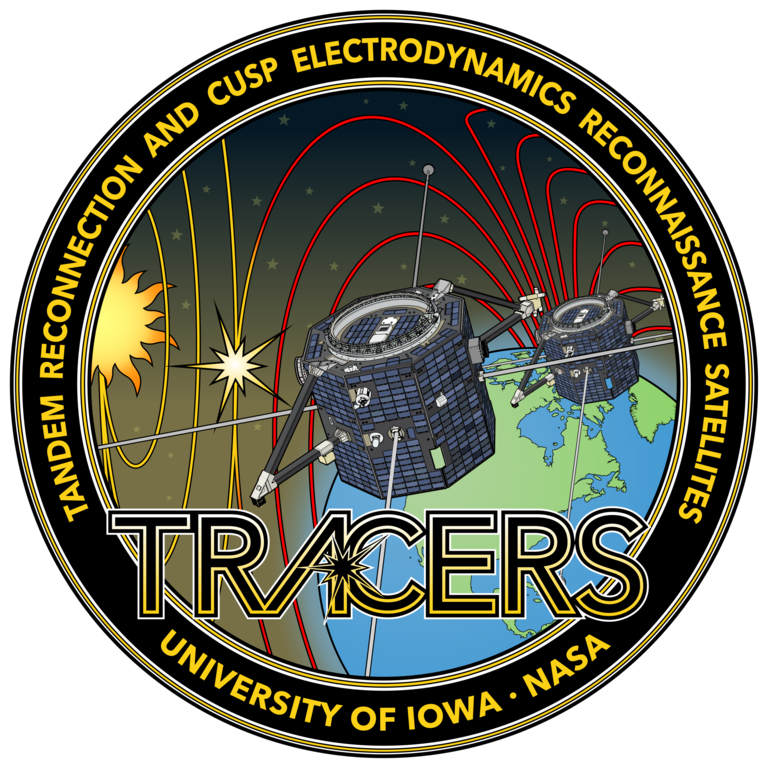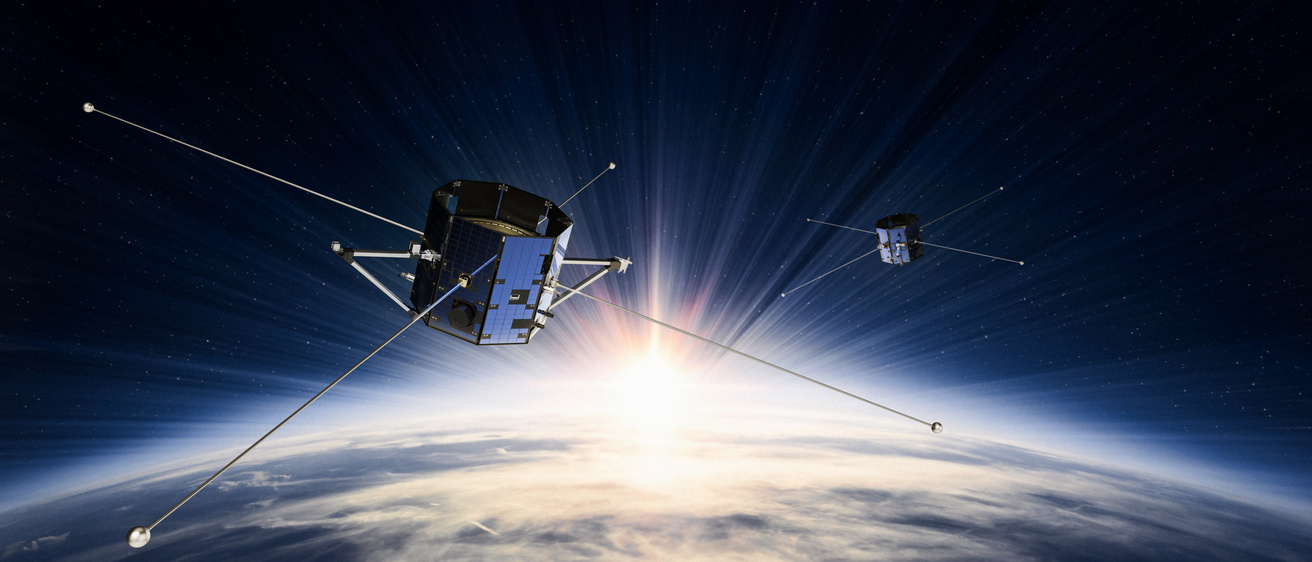Banner image credit: Millennium Space Systems
The MSC instruments are critical to answering the third TRACERS science objective - determining to what extent dynamic structures in the funnel-shaped cusp are associated with temporal vs. spatial reconnection at the distant magnetopause.
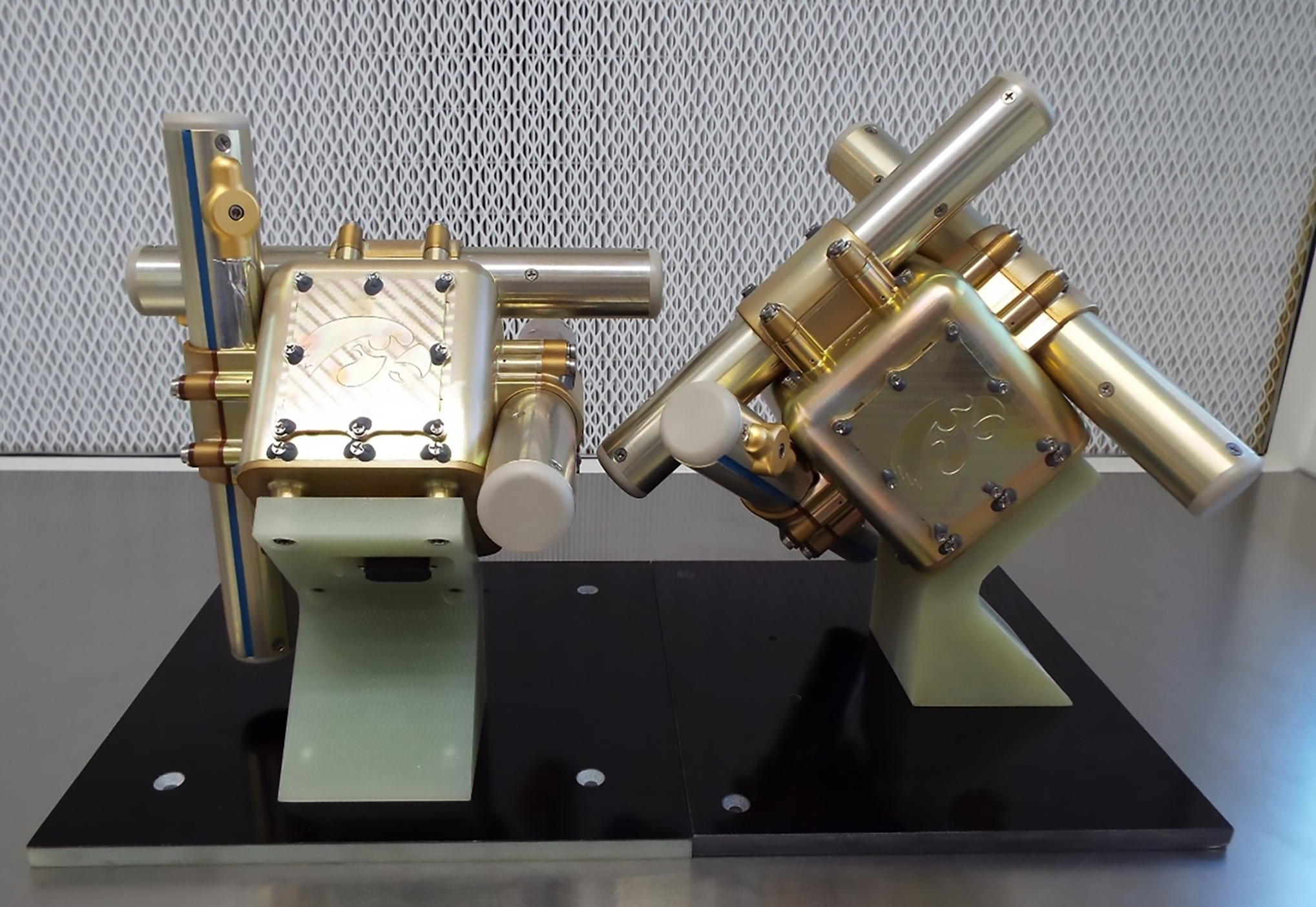
How MSC works
The Magnetic Search Coil (MSC) measures high-frequency time varying magnetic fields (from about 1 Hz to 1,000 Hz) to identify Alfvén and other electromagnetic waves. These measurements help determine to what extent dynamic structures in the cusp are associated with temporal versus spatial reconnection (the third TRACERS science objective).
The University of Iowa provides TRACERS with one MSC instrument for each spacecraft (see image above of the two MSC flight models), each consisting of three identical search coil sensors mounted in a tri-axial configuration with their corresponding electronics. Two of the sensors are oriented parallel to the two electric dipole antennas and the third parallel to the spacecraft spin axis. The MSC is mounted on a rigid boom provided by the Space Sciences Laboratory at the University of California, Berkeley opposite from the magnetometer boom to reduce any interference from the spacecraft (see images below).
Technical details
Technical details
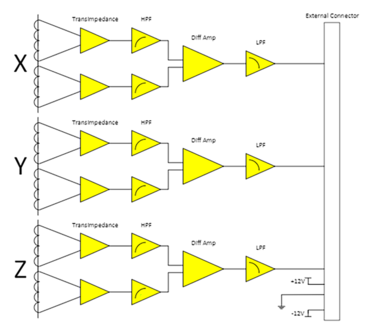
Each axis of the MSC employs a dual sensor coil system (two coils each with 26,000 turns of #44 wire on a 15 cm long high permeability core), a current amplifier with feedback to flatten the response of the sensor over frequency, a low pass filter optimized for the expected frequency range of emissions in the cusp, a high pass filter to remove the signal produced by the spacecraft spinning in the Earth’s magnetic field, and a differential amplifier. The image to the right shows the block diagram of the MSC instrument. The MSC three-axis analog signals are passed to the Electric Field Instrument’s EFI Signal Processing board (ESP) inside the Main Electronics Box (MEB) for sampling and digitization at 16 bits per sample and 2048 samples per second for each axis.
| Parameter | performance |
|---|---|
| Frequency Range | ~ 1 to 1,000 Hz |
| Sensitivity |
10-6 nT2/Hz @ 10 Hz 10-8 nT2/Hz @ 100 Hz |
| Cadence | 2024 16-bit samples/second |
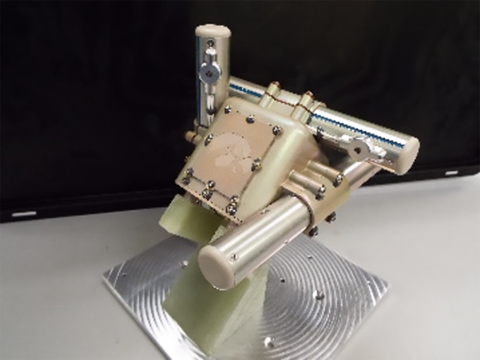
How we got to MSC
The TRACERS MSC instruments continue the over 50-year history of the University of Iowa designing and building search coil sensors for a variety of missions.
The TRACERS MSC design has direct heritage from search coils flown on ISEE-3, Wind, Juno, Van Allen Probes space missions and the VIPER sounding rocket.
